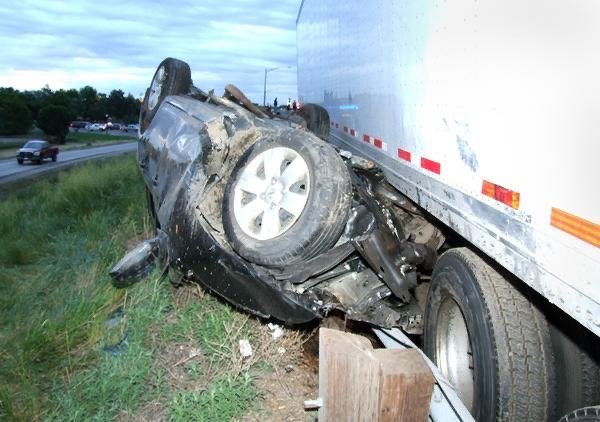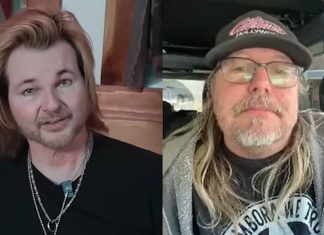There is a stretch of Highway 65 in Placer County just a few miles north of Roseville where the county’s worst vehicle crash in its history happened on Aug. 23, 1980.
News coverage at the time referred to it as an accident.
It was anything but.
One Marty Azcarate, 22, at the time, left a wedding reception in Roseville drunk.
He climbed behind the wheel of a 4,000 pound weapon and headed north toward Lincoln.
At one point, he went to pass a Datsun B-210 on the right.
Highway 65 was only two lanes at the time.
And the shoulder wasn’t that wide.
The CHP estimated Azcarate was traveling at 95 mph when he clipped the rearend right side of the Datsun B-210 headed north.
The force sent the car airborne.
It came down on a Chevy Monza coupe heading south.
Eight people were killed.
It was one of an endless stream of fatal accidents I shot as a photographer and then reporter for the Press-Tribune in Roseville.
This one, though, was different from the start.
Not just because it killed eight people.
I arrived after the victims had been transported to hospitals or the morgue.
I had no idea who was killed.
But the fact the area behind the backseat of the Monza was covered in fabric emulating the hide of a zebra was a gut punch.
I hoped I wasn’t right.
A southbound car out of Lincoln where the high school mascot was the Zebras added up to something that could be personnel.
It was, to a degree.
Killed in the Chevy Monza were the Owen sisters, students at Lincoln High, along with two cousins.
That was bad enough.
In the B-210 were two neighbors, Earl and Evelyn Seay who lived less than two blocks away from us on D Street in Lincoln.
Their son Jimmy and I were part of the graduating class of 1974 from Lincoln High.
Evelyn was my den mother in Cub Scouts.
The Seays died with another couple that was in the car with them.
It wasn’t Azcarate’s first rodeo with drunken driving,
But thanks to the State of California he got just a little more than a year in prison for every felony count of manslaughter. He did not serve his full term.
In 1982, Harry Reasoner of CBS 60 Minutes fame, interviewed Azcarate in Susanville where he was incarcerated.
How Azcarate ended up on 60 Minutes’ radar had everything to do with a tragedy that happened three months prior to the slaughter on Highway 65.
Cindy Lightner, 13, was killed on May 3, 1980 as she was walking home from a church carnival in Fair Oaks, a suburb of Sacramento.
She was struck by a repeat DUI offender. The impact knocked the teen out of her shoes and sent her flying for more than 125 feet.
Her mother, Candy Lightner, was more than distraught. She was angry.
Angry that her daughter died but even more angry at the California legal system that virtually cuddled DUI offenders.
It led to her founding Mothers Against Drunk Driving (MADD). The preventable tragedy on Highway 65 further fueled MADD’s momentum that quickly spread to all 50 states.
So where is California today when it comes to addressing the plague of driving under the influence?
In the past decade, alcohol-related driving deaths more than doubled.
Federal estimates place the increased rate of such DUI deaths as more than twice that of any other state.
The bottom line is 1,300 people are dying each and every year in California at the hands of a driver under the influence.
There were 2,900 gun-related deaths in California in 2024.
But that is not a true picture.
The Centers for Disease Control indicates 54 percent of those 2,900 deaths were by suicide,
That mean deaths by guns that were not basically by choice came to 1,160.
Do the math.
There were 140 more people killed in DUI collisions last year in California than were killed by another using a firearm.
Yet, all of the bluster and political posturing in the California Legislature revolves around revolvers and other firearms.
How to address and reduce gun violence is a political Rubik’s Cube.
The debate takes up so much oxygen in legislative chambers and what passes today for political discourse, that DUI deaths that could be prevented are barely treated as an afterthought.
What’s wrong with California?
Plenty when it comes to DUIs.
Research by CalMatters underscores that point.
*California allows repeat offenders to keep driving with minimal punishment.
*DUI laws are among the weakest in the nation.
*Many DUI drivers in California stay on the road after their license is revoked, often until they kill someone.
*California gives licenses back faster than any other state only taking it away for three years after their third DUI.
*Generally, drivers can’t be charged with a felony in California until they reach their fourth DUI in 10 years. The exception is if they injure somebody.
One little problem with that approach.
You can fill this page with the names of people who were killed by repeat offenders after racking up DUI arrests and convictions in incidents where someone else wasn’t injured.
CalMatters cited two examples that are representative of the State of California giving repeat drivers the license to kill.
The first is Sarah Villar who was walking with her fiancé in 2021 in San Benito County.
She was killed by a DUI driver who had been only slapped with misdemeanors for non-injury DUIs in 2018, 2019, and 2020.
The repeat DUI offender finally killed an innocent victim in 2021.
The other example is illustrated by a fatal collision in Fresno County in February of 2022.
Sylvester Conway has two DUI convictions in 2019 when he was arrested a third time. He was released from jail three days later. The judge issued a warrant when he failed to show up in court.
Then April 2021 he was drunk when the CHP arrested him for driving on the wrong side of a highway. He signed a citation for DUI promising to show up in court but never did.
Three DUI cases against Sylvester were still open and there were three outstanding warrants for his arrest for failing to appear, when he finally killed someone in February 2022 while under the influence.
Now for the utter failure of the California Legislature.
Lawmakers killed a bill this past session that would have greatly expanded the use of in-car breathalyzers that research has shown greatly reduces drunk driving.
The majority of states make use of the device mandatory for first time DUI offenders.
Not California.
The proposed bill was killed after the California Department of Motors Vehicles declared it lacked the resources or time to enforce such a requirement.
Yet the state legislature, on both sides of the aisle, has the time to more than dabble in national politics while the governor can find tax dollars to keep America safe for democracy, but when it comes to keeping roads safe in California there is no time or money to do that.
It would be nice if Sacramento devoted its undivided attention and resources to making a difference in the lives of Californians under the powers vested in them by the state constitution.
This column is the opinion of editor, Dennis Wyatt, and does not necessarily represent the opinions of The Bulletin or 209 Multimedia. He can be reached at dwyatt@mantecabulletin.com








